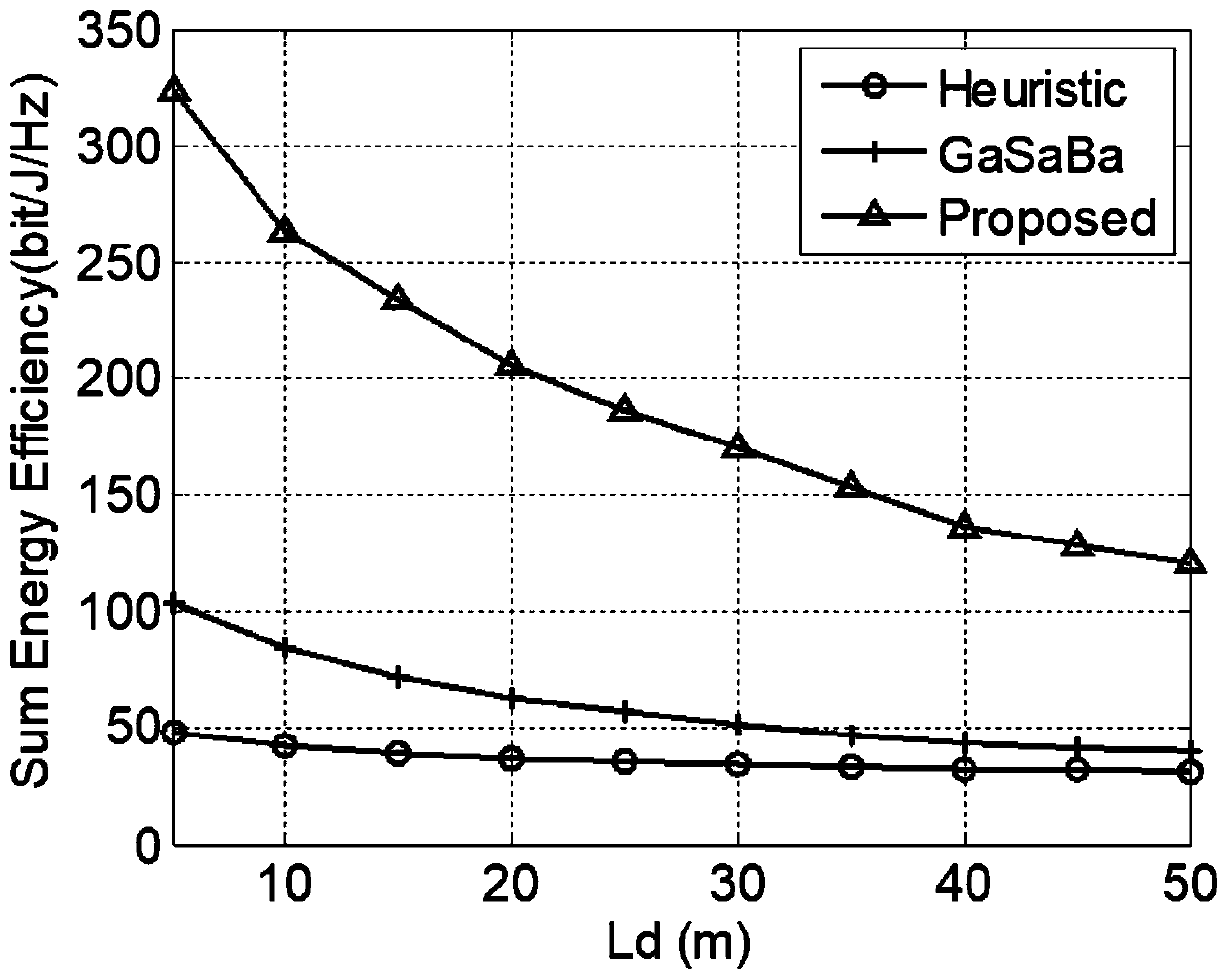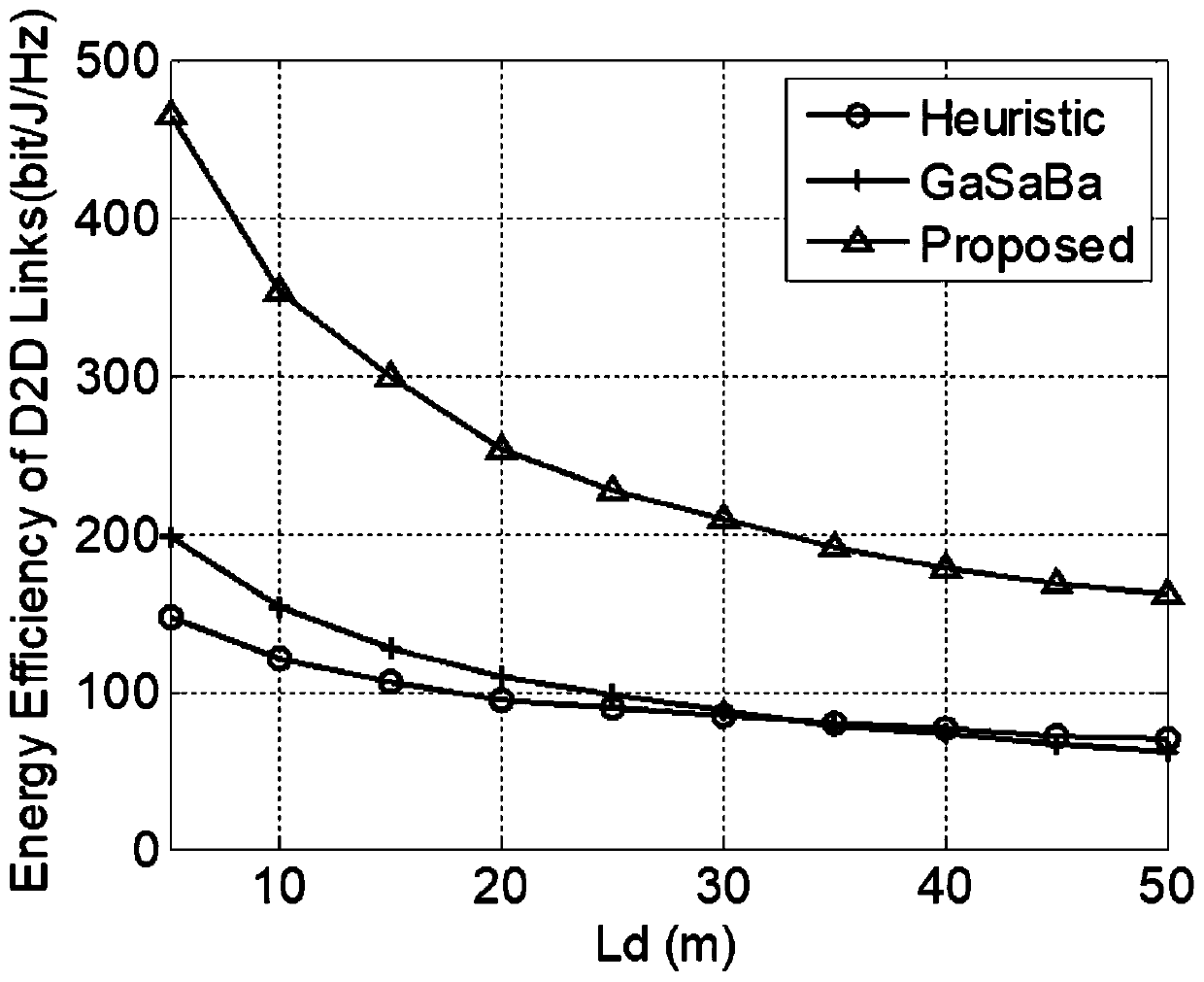A Resource Allocation Algorithm for D2D Communication in Cellular Networks
A resource allocation, cellular network technology, applied in wireless communication, machine-to-machine/machine-type communication services, sustainable communication technology, etc., can solve problems such as poor energy efficiency improvement
- Summary
- Abstract
- Description
- Claims
- Application Information
AI Technical Summary
Problems solved by technology
Method used
Image
Examples
Embodiment 1
[0066] In this embodiment, a resource allocation algorithm for D2D communication in a cellular network is provided, such as Figure 8 , including: step 1, establishing a cellular network D2D communication model, defining the transmit power of cellular user n as The transmit power of D2D user m is D2D user m multiplexes the channel resources of cellular user n, and defines constraints. The constraints include: the channel resource of one cellular user is only multiplexed by one D2D user, one D2D user only multiplexes one channel resource of cellular user, the transmit power of cellular user and The transmit power of D2D users must meet the maximum power limit requirements, and the signal-to-interference-noise ratio of cellular users and the signal-to-interference-noise ratio of D2D users must not be less than the minimum signal-to-interference-noise ratio requirements;
[0067] Step 2: Use the improved power control algorithm to perform power control, and remove unqualified ...
PUM
 Login to View More
Login to View More Abstract
Description
Claims
Application Information
 Login to View More
Login to View More - R&D
- Intellectual Property
- Life Sciences
- Materials
- Tech Scout
- Unparalleled Data Quality
- Higher Quality Content
- 60% Fewer Hallucinations
Browse by: Latest US Patents, China's latest patents, Technical Efficacy Thesaurus, Application Domain, Technology Topic, Popular Technical Reports.
© 2025 PatSnap. All rights reserved.Legal|Privacy policy|Modern Slavery Act Transparency Statement|Sitemap|About US| Contact US: help@patsnap.com



